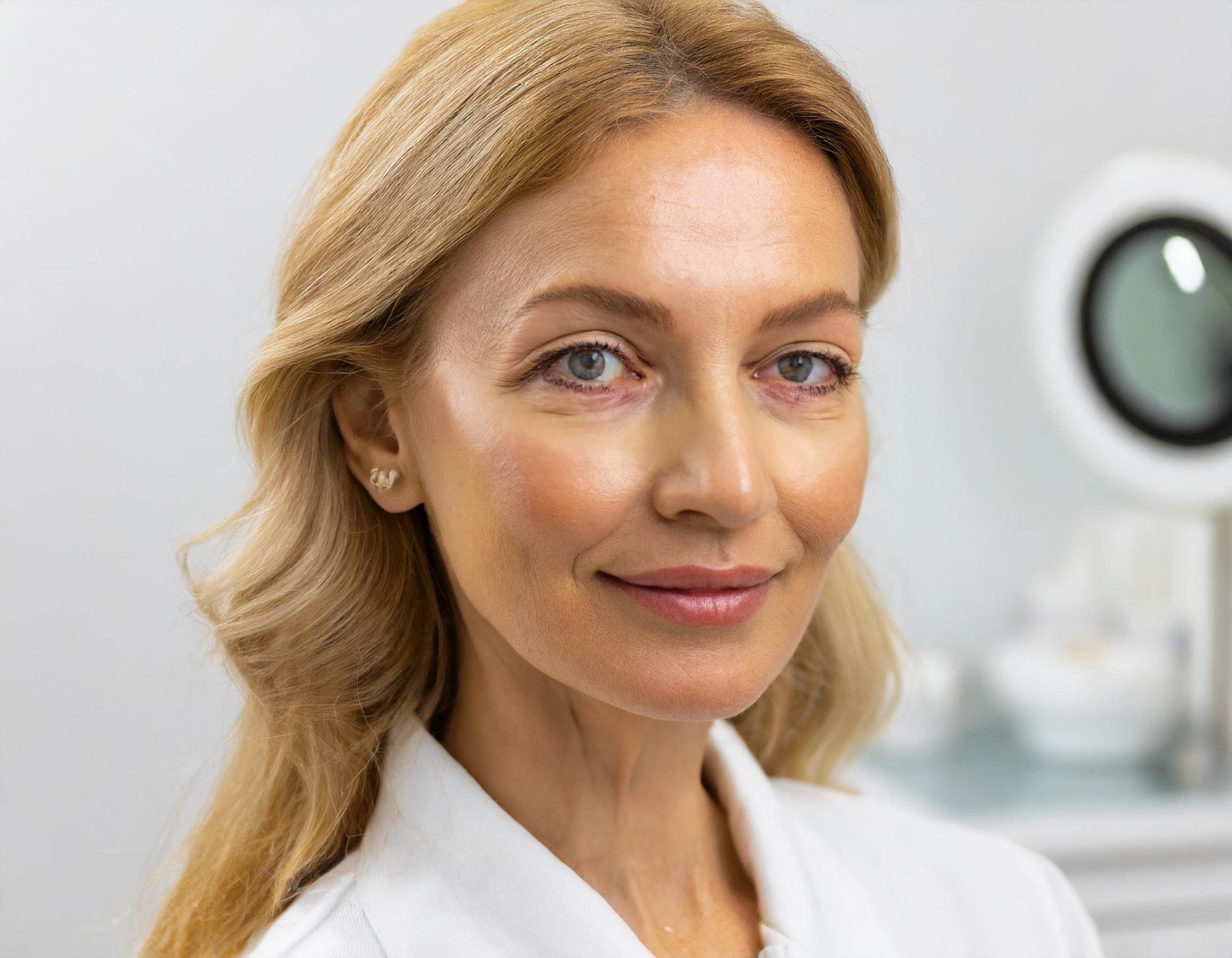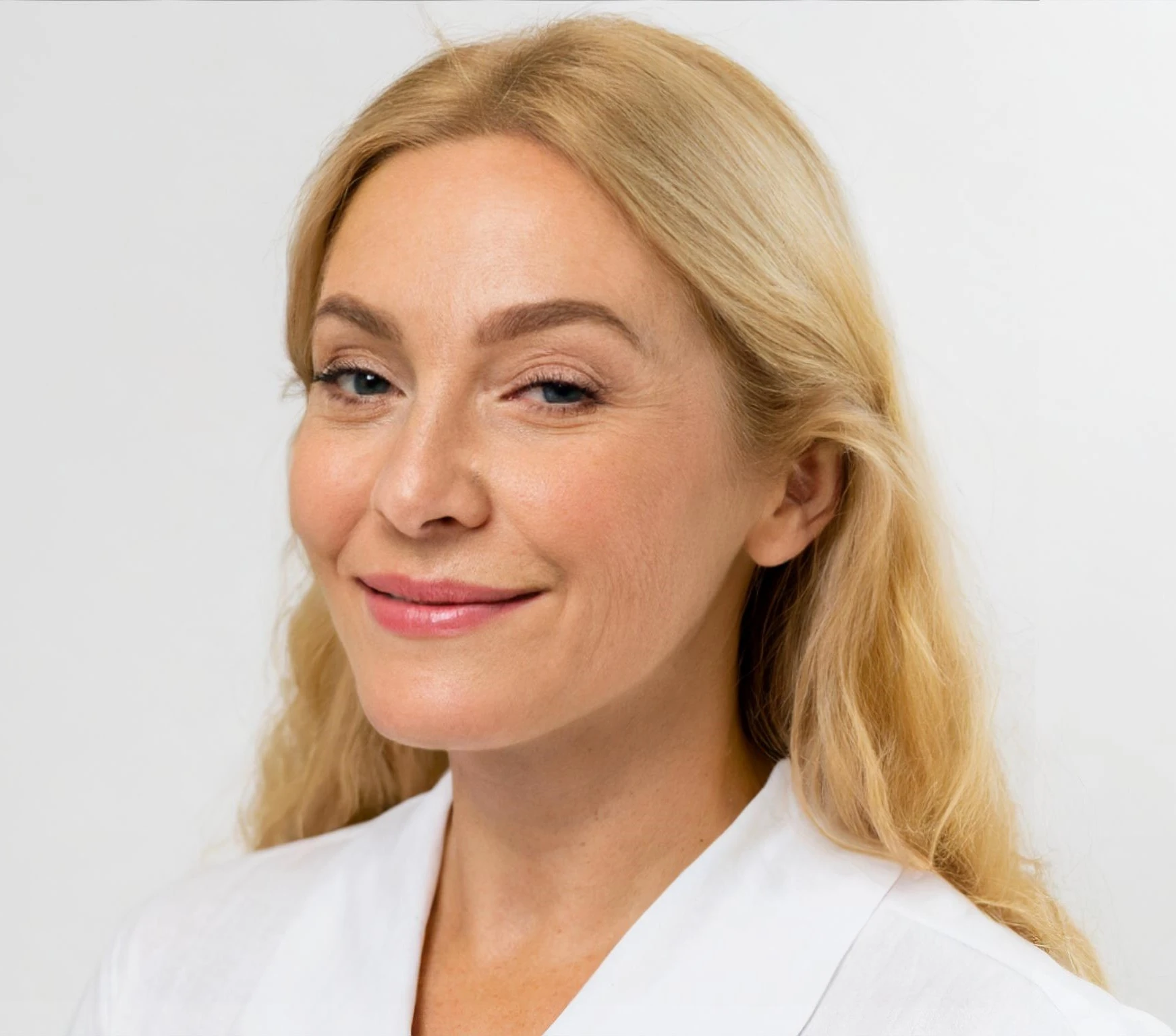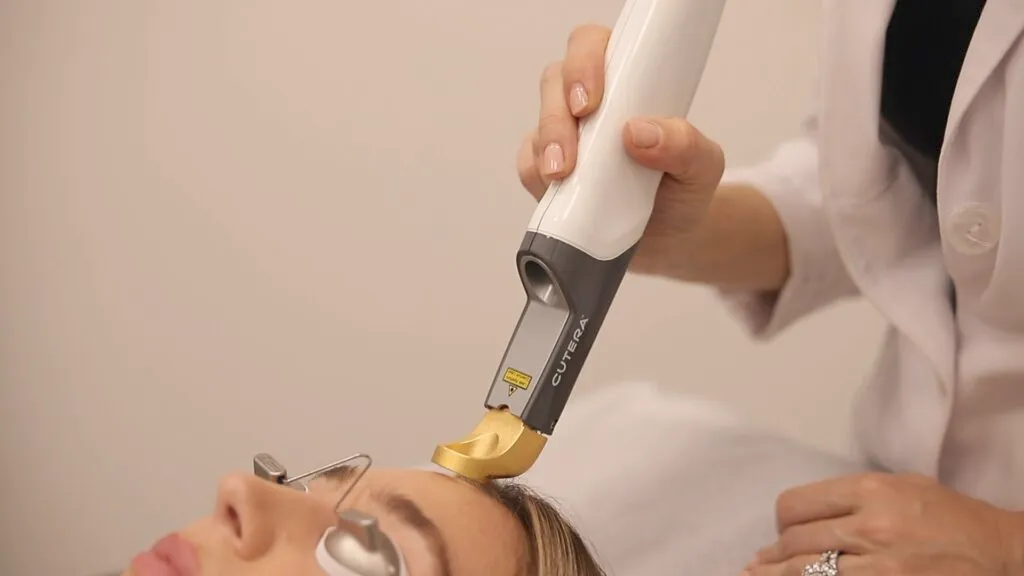
Crepey Skin
Sagging or crepey skin represent common aesthetic concerns associated with the natural aging process. As time progresses, changes in skin elasticity and the gradual loss of essential proteins like collagen and elastin contribute to the development of these issues. This guide aims to provide comprehensive insights into the causes, signs, treatment options, preventive measures, and the importance of consulting with a qualified Dermatologist for effective solutions.
Causes of Sagging Skin
As our skin ages, it undergoes intricate changes that impact its structure and firmness, contributing to the development of crepey and sagging skin. The natural aging process plays a significant role, leading to a decline in collagen and elastin, essential proteins that provide skin elasticity and support. Sun damage, accumulated over time, also contributes to skin laxity. Additionally, lifestyle choices, such as smoking and a lack of proper skincare, can accelerate the formation of crepey skin. Understanding these factors is crucial for individuals seeking to address and prevent the effects of aging on their skin, empowering them to make informed choices in their skincare routine and lifestyle.
Signs of Sagging and Crepey skin
Crepey skin is characterized by the appearance of fine wrinkles accompanied by a thin and delicate texture. The texture resembles crepe paper, hence the term “crepey.” This visual change is particularly noticeable in areas such as the jawline, neck, and under the eyes, where the skin may lose its previous firmness and definition. Sagging skin exacerbates these effects, contributing to a more pronounced lack of tightness and contour in these regions.
Understanding these visual signs is essential for recognizing and addressing crepey and sagging skin concerns effectively.
At FCP Dermatology we offer a wide range of surgical and cosmetic Dermatology services, in a 5-star luxury setting.
- +1 (416) 861-8600
- Contact via Email
Crepey Skin Treatment
Skin Boosters
Hyaluronic Acid Dermal Fillers
Sculptra
Advanced Medical Microneedling
Pico Gensis Laser
Fractional Laser
Crepey Skin Treatment
When it comes to addressing sagging and crepey skin, a variety of effective treatments are available to rejuvenate and restore a more youthful appearance. These treatments utilize advanced technologies and techniques to target specific concerns, such as fine lines, texture irregularities, and loss of skin firmness. Here’s a closer look at some of the key treatment options:
- Dermal Fillers: Dermal fillers, including hyaluronic acid-based options, have gained immense popularity for their ability to address crepey skin. By injecting these fillers into targeted areas, volume is restored, minimizing the appearance of fine lines and wrinkles. Dermal fillers can be strategically used to rejuvenate areas prone to sagging, resulting in a smoother and more lifted complexion.
- Skin Boosters: Skin Boosters are a revolutionary treatment designed to hydrate and improve skin elasticity. Utilizing injections of hyaluronic acid, Skin Boosters enhance the skin’s hydration levels, contributing to a more supple and radiant appearance. This treatment is particularly effective in combating the crepey texture associated with dehydrated or aging skin.
- Sculptra: Sculptra is an injectable treatment that stimulates collagen production, addressing both volume loss and sagging skin. By promoting the body’s natural collagen-building process, Sculptra gradually enhances skin firmness and elasticity. This long-lasting treatment provides a subtle yet transformative improvement in skin texture.
- Microneedling: Microneedling involves the use of fine needles to create micro-injuries in the skin, triggering the body’s natural healing response. This process stimulates collagen and elastin production, contributing to improved skin texture and tightness. Microneedling is a versatile treatment that can be tailored to target specific areas affected by crepey skin.
- PICO FX: PICO FX, Fractionated Laser Resurfacing, is a cutting-edge laser technology designed to address various skin concerns, including crepey texture. This non-invasive laser treatment utilizes picosecond pulses to target pigmentation irregularities, stimulate collagen production, and enhance overall skin tone. PICO FX is known for its precision and effectiveness in achieving smoother, firmer skin.
- Laser Genesis: Laser Genesis is a non-ablative laser treatment that targets fine lines, wrinkles, and uneven skin texture. By gently heating the upper dermis, Laser Genesis stimulates collagen production, leading to improved skin firmness and a reduction in the appearance of crepey skin. This treatment is suitable for various skin types and requires minimal downtime.
Crepey Skin
Combination Treatments
Addressing sagging and crepey skin effectively often involves a multifaceted approach, combining various treatments for comprehensive results. Procedures like dermal fillers, skin boosters, Sculptra, microneedling, Pico FX, and Laser Genesis each bring unique benefits to the table.
- Dermal fillers can restore lost volume, while skin boosters hydrate and rejuvenate the skin.
- Sculptra stimulates collagen production for improved elasticity. ‘
- Microneedling promotes collagen synthesis
- Pico FX and Laser Genesis target skin texture and tone.
By strategically combining these treatments, individuals can address different aspects of sagging and crepey skin, achieving a more holistic and tailored rejuvenation.

How to get rid of crepey skin
Choosing a Qualified Dermatologist
Choosing a qualified Dermatologist is a pivotal decision in the journey to address sagging and crepey skin effectively. A board-certified Dermatologist holds a recognized level of expertise and has undergone rigorous training, ensuring a high standard of care. Board certification serves as a testament to the dermatologist’s commitment to professional excellence and adherence to industry standards.
Experience is a key factor. An experienced Dermatologist brings a wealth of knowledge and a refined skill set to the table. Years of practice contribute to a deep understanding of various skin conditions, enabling precise diagnosis and tailored treatment plans.
Positive patient reviews are valuable indicators of a Dermatologist’s reputation. Real-life experiences shared by previous patients provide insights into the Dermatologist’s approach, the effectiveness of treatments, and the overall patient experience.
Crepey Skin
Prevention Strategies
Implementing effective prevention strategies is paramount in maintaining skin health and delaying the onset of crepey and sagging skin. One fundamental aspect is consistent sun protection, as exposure to UV rays accelerates aging. Regularly applying sunscreen with a sufficient SPF shields the skin from harmful radiation, preserving its elasticity and firmness.
An essential component of preventative care is a diligent skincare routine tailored to individual skin needs. Using quality products that address specific concerns, such as those promoting collagen production and providing ample hydration, fortifies the skin’s natural defenses. Regular cleansing, exfoliation, and moisturizing contribute to a radiant and supple complexion.
Consistency in these preventative measures forms a proactive approach to skincare, promoting lasting skin health and mitigating the progression of crepey and sagging skin.

Age Spots FAQ
Frequently Asked Questions about Age Spots
Liver spots, also known as age spots or solar lentigines, are flat, brown spots that develop on the skin due to prolonged sun exposure and aging. They commonly appear on areas frequently exposed to the sun, such as the face, hands, and arms.
How to remove brown spots on face?
Liver spots, also known as age spots or solar lentigines, are caused by prolonged sun exposure and aging, which lead to an increase in melanin production and the development of dark spots on the skin.
Freckles are small, concentrated spots of pigment that develop as a result of genetics and sun exposure. They are triggered by an increase in melanin production
How to get rid of age spots: Age spots, also known as liver spots or solar lentigines, can be treated with options such as topical bleaching creams, cryotherapy, laser therapy, chemical peels, and microdermabrasion.
How to get rid of dark areas on face: Dark spots on the face can be treated with various methods, including topical creams containing ingredients like hydroquinone or retinoids, chemical peels, laser therapy, and microdermabrasion.
How to get rid of brown spots on face: Brown spots on the face can be treated with options such as topical bleaching creams, chemical peels, laser therapy, and microdermabrasion, which can help reduce the appearance of hyperpigmentation.
Natural remedies for age spots include applying lemon juice, apple cider vinegar, aloe vera, or vitamin E oil to the affected areas. However, effectiveness can vary, and it's essential to consult a dermatologist for proper guidance.
Despite their name, liver spots have no connection to liver health. They are simply a common sign of sun-induced skin damage and aging.
Yes, age spots and sun spots are essentially the same thing. They are both terms used to describe flat, brown or grayish patches that appear on the skin, particularly in areas exposed to the sun, such as the face, hands, arms, and shoulders. These spots develop due to an accumulation of melanin, the pigment responsible for skin color, as a response to UV exposure over time. While some people may use the terms "age spots" and "sun spots" interchangeably, they refer to the same phenomenon of hyperpigmentation caused by sun damage and aging.
Cancerous sun spots, or potentially cancerous lesions, may exhibit certain characteristics that differ from benign sun spots. These characteristics, often referred to as the ABCDEs of melanoma, include:
A: Asymmetry - One half of the spot does not match the other half.
B: Border irregularity - The edges of the spot are irregular, notched, or blurred.
C: Color variation - The spot may have various shades of brown, black, or other colors, or it may appear red, white, or blue.
D: Diameter - The spot is larger than the size of a pencil eraser (about 6mm) or is growing in size.
E: Evolution - The spot changes over time in size, shape, color, or elevation, or it becomes symptomatic, such as itching or bleeding.
It's important to note that not all cancerous spots will exhibit all of these characteristics, and some benign spots may display similar features. If you notice any changes in your skin, including the appearance of new or changing spots, it's crucial to consult a dermatologist for evaluation and proper diagnosis.
Preventing age spots primarily involves minimizing exposure to ultraviolet (UV) radiation from the sun and adopting healthy skincare habits.
Age spots typically do not grow or change significantly in size over time. Once they have formed on the skin, they tend to remain stable in size and appearance, although they may darken or become more pronounced with continued sun exposure or as a result of aging. While age spots themselves do not grow, it's essential to monitor any changes in the size, shape, color, or texture of skin lesions, as these changes could indicate more serious skin conditions, such as melanoma. If you notice any unusual changes in your skin, it's important to consult a dermatologist for evaluation and appropriate management.
Sun spots typically do not go away on their own. Once they have formed on the skin, they tend to persist unless treated. However, with appropriate treatment and preventive measures, the appearance of sun spots can be minimized or faded over time. Treatment options for sun spots include topical bleaching agents, chemical peels, laser therapy, cryotherapy, and microdermabrasion. It's important to consult a dermatologist to determine the most suitable treatment approach based on the severity of the sun spots and individual skin characteristics. Additionally, practicing sun-safe habits such as wearing sunscreen, seeking shade, and wearing protective clothing can help prevent the formation of new sun spots and reduce the risk of existing ones worsening.
The frequency of professional treatments for age spots depends on the specific treatment method used and the individual's skin response. Some treatments may require multiple sessions spaced several weeks apart for optimal results.
While diet and nutrition play a role in overall skin health, there is limited evidence to suggest that specific dietary factors directly impact the appearance of age spots. However, maintaining a balanced diet rich in antioxidants, vitamins, and hydration can support skin health and may contribute to a more radiant complexion.
Common misconceptions about age spots include beliefs that they can be completely prevented, that natural remedies are always effective, or that all age spots are harmless. It's essential to seek accurate information from reliable sources and consult with a dermatologist for personalized advice and treatment options.
Crepey Skin FAQ
Frequently Asked Questions About Sagging and Crepey Skin
Sagging and crepey skin result from aging, collagen and elastin loss, sun damage, and lifestyle choices, impacting skin structure and firmness.
Dermal fillers counteract crepey skin by injecting hyaluronic acid, restoring volume and firmness for a rejuvenated appearance.
Absolutely! Skin boosters enhance hydration and collagen production, visibly improving skin texture and minimizing crepiness.
Sculptra stimulates collagen production, gradually restoring skin elasticity, reducing sagging, and promoting a more youthful look.
- Microneedling, with its micro-injuries, stimulates collagen, improving texture and effectively addressing the appearance of crepey skin.
Pico FX, a cutting-edge laser technology, tightens skin by boosting collagen production, reducing sagging, and enhancing overall skin tone.
Laser Genesis boosts collagen formation, improving skin tone, texture, and reducing sagging, offering a non-invasive solution.
Dermatologists tailor treatments for individual skin types, ensuring that dermal fillers, microneedling, and lasers are suitable for various skin tones.
While results vary, improvements are often noticeable shortly after the procedure, with optimal results becoming more apparent over time.
While results vary, dermal filler effects typically last months to years, depending on the specific filler type chosen.
Recovery is brief, with minor redness and swelling that usually resolves within a few days, making microneedling a convenient option.
Absolutely! Combining treatments provides comprehensive results, effectively addressing crepey and sagging skin concerns.
Temporary side effects like redness, swelling, or bruising may occur, typically resolving quickly and posing minimal risks.
Age alone does not determine candidacy; treatments are assessed individually based on factors like skin condition and health.
Absolutely! A healthy lifestyle, including sun protection and skincare, can extend the longevity of results from these treatments.
The number of sessions varies based on the specific treatment, individual response, and the desired outcome.
Costs depend on factors such as treatment type, location, and the personalized nature of the treatment plan.
